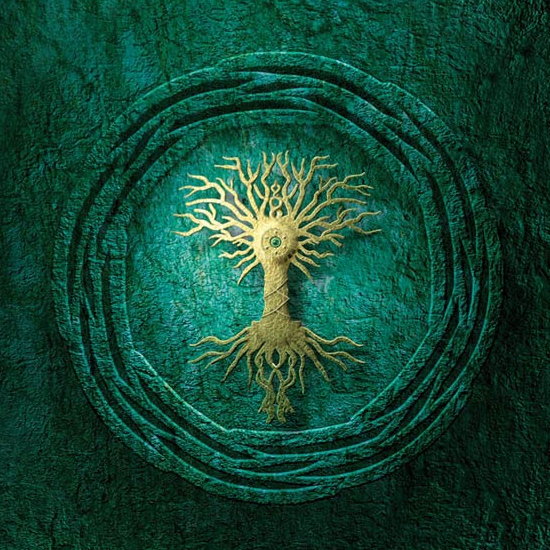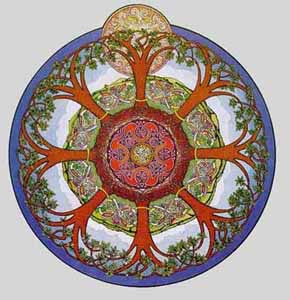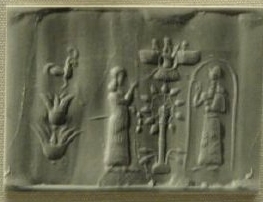|
The Tree of Life The Sumerians |
|||
|
|||
|
In Art
|
|||
|
On Cylinder Seals .
There are several later
paintings and drawings of the Tree of Life,
but this Sumerian Clay tablet (however crude it
might appear) is one of
the earliest, if not the first. It is among the
original Sumerian Cylinders
and clay tablets excavated circa 2, 500 BCE.
The clay tablet is prepared by rolling the carved metal seal on wet clay, which is then baked. Once baked the tablet cannot be altered. The original Sumerian (Indo-Iranian) concept was that wisdom is likened to a tree whose fruit endows those who eat it with health and longevity. The symbol of an elixir of life had already been well established in antiquity by the Indo-Iranian cultures long before Judaism, Christianity, Islam and other cultures had the opportunity to recognise it. This 4,500 year old clay tablet shows a man and a woman seated below the Tree of Life. Behind the woman is seen a serpent allegedly ‘tempting’ the woman. This concept was expurgated in the Bible as the tree of life in the Garden of Eden by the Jews and Christians. The Book of Genesis 3.22 mentions such a tree as ‘the giver of eternal life.’ This
article
was posted on vohuman.org on July 11, 2005.
|
|||
|
|||
|
The Akkadian Tree of Life .
|
|||
| FAIR USE NOTICE: This page contains copyrighted material the use of which has not been specifically authorized by the copyright owner. Pegasus Research Consortium distributes this material without profit to those who have expressed a prior interest in receiving the included information for research and educational purposes. We believe this constitutes a fair use of any such copyrighted material as provided for in 17 U.S.C § 107. If you wish to use copyrighted material from this site for purposes of your own that go beyond fair use, you must obtain permission from the copyright owner. | |||
|
|








